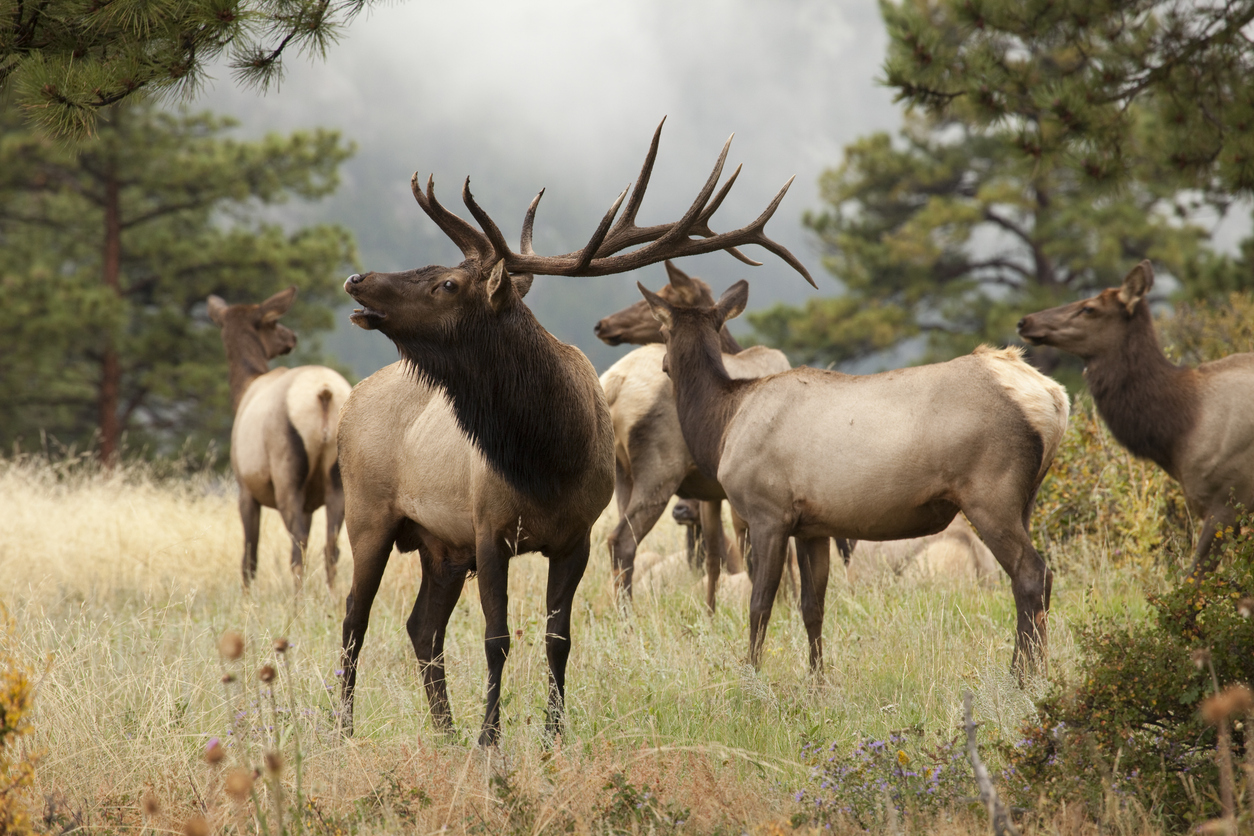TIMELINE: Four key phases elk experience each year as the species navigates Colorado

Elk are an iconic species in Colorado and a hallmark of mountain spots like Estes Park, Rocky Mountain National Park, and Evergreen.
With the state’s elk population at more than 280,000 animals, Colorado is home to the largest population of elk in the world, according to Colorado Parks and Wildlife (CPW).
Elk roam across the mountainous regions of Colorado, making their way through meadows and alpine tundra as the species tends to travel quite a bit throughout the year. They’ll often move in herds of up to several hundred individuals as they make their yearly journey throughout the Centennial State.
Here’s a look at elk’s phases throughout the year:
Pre-Rut (August – September)
Once the season starts to change from summer to fall, bulls become more vocal, as their hormonal levels rise and interest in cows increases.
Peak Rut (Mid-September – October)
The peak of the elk’s mating season occurs in mid-September to mid-October. During this time, bulls will become very vocal as they bugle to attract cows and challenge other bulls.
Post-Rut (October – December)
The peak of the elk rut draws to a close at the end of October as the animals migrate from higher elevations. The bulls will quiet down as the breeding season comes to an end.
When the temperatures drop and the elk’s food sources become covered in snow, they’ll move from higher elevations to lower elevations (still about 5,000 feet above sea level). Food sources are less likely to be under snowpack at lower elevations. According to Kara Van Hoose, a public information officer with Colorado Parks and Wildlife, elk will continue to come down from the high country, into towns like Estes Park, from November to early December.
Antler growth and birthing season (January – June)
Antler shedding season happens from January through April.
Bull elk begin growing new antlers around April and the process continues through the late summer. Antlers grow quickly – up to an inch per day. The antler growing period stops in the late summer, and bulls start shedding the velvet that covers their antlers.
Birthing season takes place in the spring, typically late April to early June.
STAY INFORMED: Get free Colorado news with our daily newsletter (Click here)
Get OutThere
Signup today for free and be the first to get notified on new updates.






